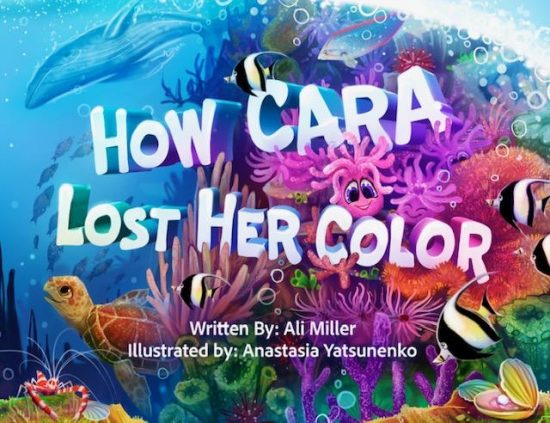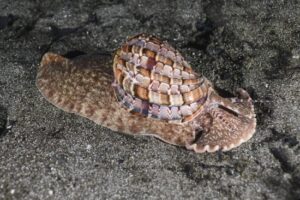
Ivana OK: What are you by profession?
In a complete leap of faith, I moved to Maui from Reno, Nevada in August 2015 to follow my dreams and pursue an education in marine biology. That same year, coral reefs around the world were dying in what became the largest mass coral bleaching event in recorded history. I didn’t know that at the time.
Ivana OK: What role do corals play in the eco system?
Corals are the basis for all life in the ocean. The health and vitality of the ocean as a whole, is dependent on the health of its coral reef ecosystems. Although coral reefs account for less than 1% of the space in the ocean, they are home to about 25% of all marine species. Protecting these precious ecosystems is a crucial step in maintaining biodiversity. According to the Kumulipo, the ancient Hawaiian creation chant, corals were the first forms of life on Earth, creating a foundation for all other species.
Ivana OK: What was the path from a love for corals towards the beautiful children’s book?
When I arrived on Maui, I saw the devastating impacts of climate change first hand as I studied local reefs. While completing class surveys to record coral cover and signs of bleaching, I saw large areas go from looking fairly healthy, to being completely dead within a couple of months.
While completing the UH program and working as a naturalist, I became determined to find a way to teach children about the effects of warming ocean temperatures. If they could understand, from an early age, what coral actually is and why it’s important, that knowledge could help them adopt sustainable practices into their lives as they grow up.
I love educating people about the ocean and seeing them get excited about conservation. One of the best things about working in marine science is inspiring people through education and seeing that spark turn into action. Creating this book was my way of giving back.
Art is one way to turn something heartbreaking into something inspirational. I’ve always loved writing, and I decided to create a children’s book that would allow kids to connect with corals as something more than just scenery. I spent about six months writing and four months working with Anastasia, the amazing illustrator. She did a wonderful job bringing the story to life so readers can feel like they are snorkeling in Hawaii as they turn each page. Anastasia Yatsunenko is from Kiev, Ukraine and completed the illustrations from her home there and parts of Israel.
Beautifully illustrated with colors inspired by Hawaiian reef fish, ‘How Cara Lost Her Color’ serves as an educational resource for parents and teachers. Through relatable characters and words that rhyme, children connect with corals as animals and learn how vital they are to all marine species.
In the story, Cara, the coral polyp, and her algae friend, Zoey, live happily alongside many other sea creatures who call the reef their home. But when human activity causes the ocean temperature to rise, Zoey must escape with her family and leave Cara behind. Can humans help bring Zoey back and save the reef?
Ivana OK: There are many divers around the world. What can we all do, as individuals, to save corals?
Humans can be the heroes in this story and in our own. There are many actions we can take to fight climate change today. If we collectively choose to act now, we can preserve the ocean and its remarkable inhabitants for generations to come.
For anyone who loves the ocean and wants to help protect the planet, there are many “small actions” that can have a HUGE impact. I’ve listed just a few ideas below.
- Be extremely careful not to disturb corals when visiting your favorite snorkeling and diving locations. Each polyp is alive, so be mindful of your fins and be sure to stand on the sand if you need to take a break.
- Use clothing as your first line of defense against the sun. Long sleeved swim shirts (rash guards), hats and board shorts are great alternatives to globs of sunscreen for a day at the beach. If you use sunscreen, be sure to use a “non-nanotized” zinc oxide or titanium dioxide based product. Research has shown that chemicals in many popular sunscreens (oxybenzone and octinoxate) are harmful to coral and their larvae and can actually cause coral bleaching.
- Work to protect shark populations from commercial fishing practices and shark finning. It’s unfortunate that sharks have gotten a bad rap from Hollywood movies, but they play a critical role in keeping the ocean and its fish populations healthy. We need sharks and large predators to keep the ocean in balance and they are disappearing at a rate of 100 million per year.
- Anything you can do to reduce your carbon footprint is a “step” in the right direction!
- Pick up trash in your neighborhood or organize a beach clean up. Raising awareness and getting your family, friends, and community excited about your conservation effort is pivotal.
- Reduce the amount of plastic you use by making small changes. For example, switching from single-use plastic water bottles to a reusable bottle will not only save money, but also thousands of bottles per family each year!
- Reduce the amount of meat in your diet (even if it’s just a few meals a week). Industrial Agriculture is a major contributor to climate change and biodiversity loss worldwide.
- Eat locally-grown produce and organic products when possible. Organic farming practices help protect soil integrity for future generations and keep dangerous pesticides from contaminating water resources. Shipping produce from one continent to another pollutes the environment and contributes to the rise in CO2 emissions.
- Compost food waste when possible. It’s great for soil and plants will love you! Plus, it keeps those precious scraps from being dumped into a landfill.
- Don’t buy into fast fashion. Everything we use comes with a carbon price tag. We all have to buy new clothes, but just being aware of our purchases can lead us to make better choices.
- Plant native trees in your area. Trees absorb and store carbon while releasing oxygen into the atmosphere. Trees are awesome and we love them!
Discover Ali’s work here.
Written by Ivana OK and Ali Miller
Photos: Ivana OK, Janez Kranjc, Ali Miller archive
Illustration: Anastasia Yatsunenko
The post How Cara Lost Her Color appeared first on Mares – Scuba Diving Blog.
Read MoreDiving, bleaching, book, coral, coral reef, ecology, ecosystem, Hawaii, marine lifeMares – Scuba Diving Blog


